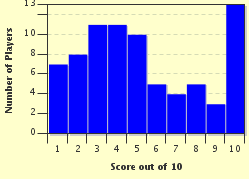Quiz Answer Key and Fun Facts
1. Ralph's first clue is a half-eaten apple which has been left at the scene of the crime, leading him, naturally, to the great Sir Isaac Newton. However, Newton couldn't have broken the centrifuge this morning, as he was engaged in a rather odd activity in his bedroom. Which of the following bizarre things is Isaac Newton believed to have done?
2. Ralph deduced from his talks with Isaac Newton that the culprit was someone whom sir Isaac was not particularly fond of. This leads Ralph to Robert Hooke, who closes his copy of "Micrographia" and sets aside his compound microscope so that Ralph can take a seat. It quickly becomes clear to Ralph that Hooke could not possibly have broken the centrifuge, as he was too busy. Which of these achievements is NOT accredited to Robert Hooke?
3. Hooke tells Ralph that the culprit's latest work contributed to the study of how organisms develop and how cells differentiate. "Eureka!" cries Ralph, "DNA is the answer". However, Ralph's interrogation of Francis Crick proves fruitless, as it is apparent that someone would have heard his booming laugh if he were in the lab at the time of the accident. Instead, Crick was down at the local pub announcing his discovery of the structure of the molecule of life. What is the name of this now famous pub in Cambridge?
4. Francis Crick told Ralph that the person he was looking for had not been given their due credit in history, and, with his mind still on DNA, Ralph could think of no one else than Rosalind Franklin. What major (and often overlooked) contribution did Franklin make to the discovery of the structure of DNA?
5. Rosalind Franklin describes the culprit, saying that they are an "ACE" scientist and "the Bombe". Ralph now questions James Chadwick, a rather ace scientist, discoverer of the neutron and one of the main British scientists involved in the atomic bomb project. However, Chadwick also has a solid alibi, since he was in Liverpool, constructing an impressive piece of equipment. Which of the following did James Chadwick construct?
6. James Chadwick tells Ralph that the person he is looking for is a quiet person, often overshadowed by their gregarious co-workers. Ralph concludes that Chadwick must be referring to Michael Faraday. Which former employer of Faraday voted against him becoming a fellow of the Royal Society and arguably delayed his discoveries in electromagnetic rotation and electrolysis?
7. Michael Faraday's work in electromagnetism inspires him to describe the perpetrator as "on the spectrum". Ralph takes this the wrong way and so mistakenly suspects that James Clark Maxwell was behind the broken centrifuge. Aside from his work with the electromagnetic spectrum, in which other area did Maxwell contribute, often working closely with Ludwig Boltzmann?
8. James Clark Maxwell informs Ralph that the person who broke the centrifuge actually spends most of their time with machines/computers. With this new knowledge, Ralph makes his way across the lab to Dorothy Hodgkin, who is perched intensely by a computer screen, analysing several images which she has generated using X-ray crystallography. Which of these did Dorothy Hodgkin NOT discover the structure of?
9. Dorothy Hodgkin is not responsible for the broken centrifuge, but she does give Ralph another clue about the guilty party - namely that they were once based at Cambridge University. Ralph's attention is immediately drawn to Paul Dirac, one of the longest serving Lucasian Professors of Mathematics at Cambridge. Which of these is Paul Dirac most known for?
10. Ralph's latest clue from the Cambridge alumnus Paul Dirac is that the person who broke the centrifuge also worked at the University of Manchester. Upon hearing this, it dawns on Ralph that he has been considering each clue on its own, rather than taking them together to find the member of the lab to whom they all apply (where's his scientific method?!). Ralph now lays out all of the clues he has gathered in front of him: the half eaten apple, that the culprit would be disliked by Newton, that they contributed to the study of organismal development, that they worked closely with machines, that they are "on the spectrum", quiet, and often overlooked, that they worked at the Universities of Cambridge and Manchester, and that Rosalind Franklin rather oddly described them as "ACE" and "the bombe".
Help Ralph solve this enigma - who is responsible for the broken centrifuge?
Source: Author
doublemm
This quiz was reviewed by FunTrivia editor
bloomsby before going online.
Any errors found in FunTrivia content are routinely corrected through our feedback system.

